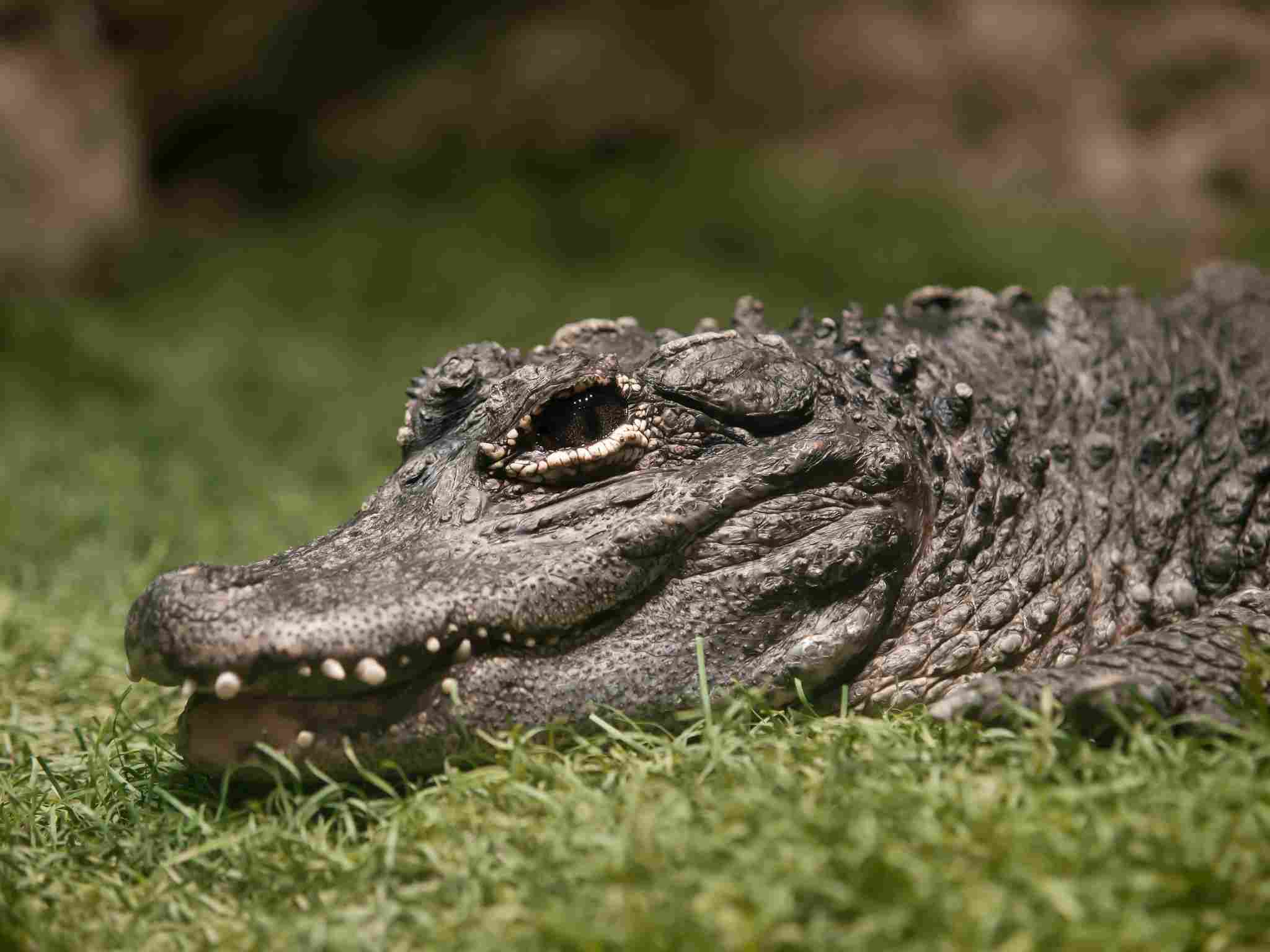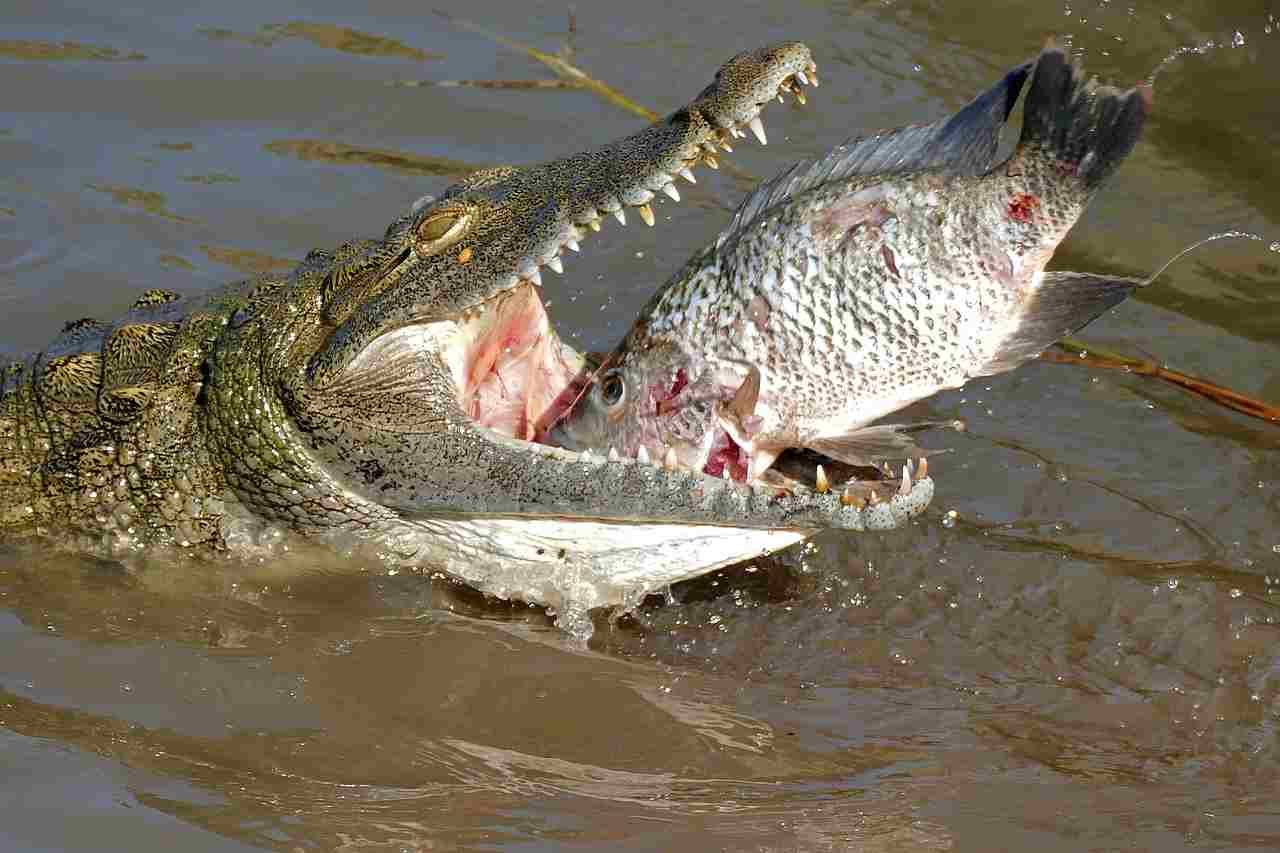Alligator Vs Python Who Would Win, Overall Comparison
In a theoretical encounter between an alligator and a python, two powerful predators with taxonomic similarities but distinct physiological and behavioral differences, we delve into the potential dynamics of this confrontation. Both belonging to reptilian groups, this analysis aims to highlight their shared ancestry while emphasizing that, in a fight, the alligator would likely emerge victorious due to its generally larger size, greater weight, increased strength, and superior speed both on land and in water. The python’s constricting method is contrasted with the more potent and damaging jaws and teeth of alligators.
Alligator vs Python: Assessing the Likely Victor in a Confrontation
In a hypothetical scenario involving an alligator and a python, two reptilian predators with taxonomic similarities, the outcome of a fight is influenced by their physiological and behavioral differences. While both are formidable predators, the advantages in size, weight, strength, and speed favor the alligator, making it likely to prevail in this hypothetical confrontation.
I). Taxonomic Similarity and Physiological/Behavioral Differences:
– Alligators and pythons share taxonomic similarities as reptiles, but their physiological and behavioral differences shape their predatory strategies. Alligators are more adapted to aquatic environments, whereas pythons are known for their constricting method.
II). Size, Weight, and Strength Advantages:
– Alligators are generally larger, heavier, and stronger than pythons. These advantages contribute to the alligator’s physical dominance and effectiveness as a predator. The robust build of alligators enhances their capability to overpower prey.
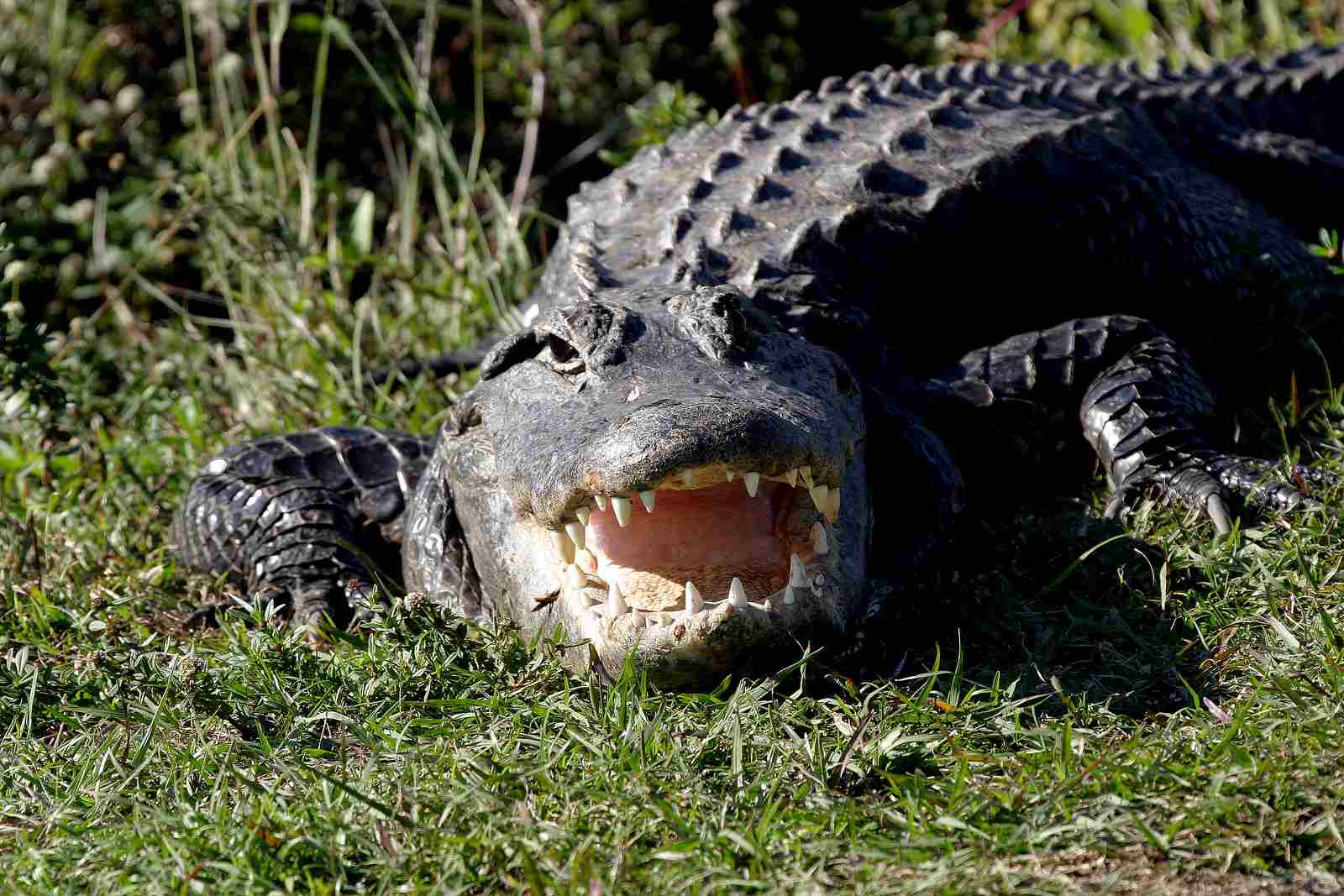
III). Speed on Land and in Water:
– Alligators exhibit superior speed both on land and in water compared to pythons. This increased mobility allows alligators to navigate various terrains efficiently, enhancing their hunting and defensive capabilities.
IV). Python’s Constricting Method:
– Pythons rely on a constricting method to subdue and immobilize their prey. While effective, this strategy is generally slower and less damaging than the powerful jaws and teeth of alligators. The constricting process may be less immediate in a confrontational scenario.

V). Overall Dynamics:
– In this hypothetical scenario, an alligator is likely to emerge as the victor in a fight against a python due to its generally larger size, greater weight, increased strength, and superior speed both on land and in water. While the python’s constricting method is effective for subduing prey, the overall dynamics favor the alligator in this hypothetical confrontation between these powerful reptilian predators.
*Details of Comparison
| Criteria | Alligator | Python |
| Appearance | Bulkier, aquatic-adapted, armor-like scales |
Slender, terrestrial, smooth, overlapping scales
|
| Size and Weight | Generally smaller and lighter |
Can reach larger sizes and weights
|
| Bite Force | Powerful bite force (around 2,125 PSI) |
Bite force varies, less documented
|
| Offensive and Defensive Advantages | Powerful bites, protective armor |
Constriction for offense, agility, camouflage for defense
|
| Speed and Agility | Faster in water (up to 20 mph), less agile on land |
More agile on land, less agile in water
|
| Physical Capacity and Habitat Preference | Well-adapted to aquatic life, freshwater habitats |
Adapted to terrestrial habitats, adaptable across environments
|
| Tracks and Lifespan | Clawed webbed footprints, longer lifespan |
Serpentine trail, generally shorter lifespan
|
| Feeding and Intelligence | Grasping and swallowing with bites, signs of intelligence |
Constriction, less documented intelligence
|
| Social Behavior and Reproduction | Primarily solitary, limited social interactions, oviparous |
Primarily solitary, limited social interactions, oviparous
|
| Parental Behavior and Proximity to Humans | Limited parental care, proximity to human areas |
Limited parental care, proximity to human areas
|
| Behavior Toward Humans and Danger Posed | Generally avoid but may become aggressive if provoked |
Generally avoid but pose a potential danger
|
| Associated Precautions and Conservation Status | Public awareness, removal of threats, conservation efforts |
Public awareness, removal of threats, varying conservation status
|
Key Points
- Alligators are adapted to aquatic life, while pythons are terrestrial.
- Alligators exhibit powerful bites; pythons use constriction.
- Pythons can reach larger sizes and weights than alligators.
- Alligators are faster in water; pythons are more agile on land.
- Alligators have longer lifespans than pythons.
- Both species are primarily solitary with limited social interactions.
- Both lay eggs and show limited parental care.
- Proximity to human-inhabited areas can lead to potential conflicts.
- Conservation status varies, with the Chinese Alligator and some python species facing higher threats.
1. Taxonomy:
Alligator (Alligatoridae family):
Subfamily: Alligatorinae
Genus: Alligator
Two species: American Alligator (Alligator mississippiensis) and Chinese Alligator (Alligator sinensis)
Python (Pythonidae family):
Subfamily: Pythoninae
Genus: Python
Various species, commonly Burmese Python (Python bivittatus) and African Rock Python (Python sebae) in comparison.
2. Appearance:
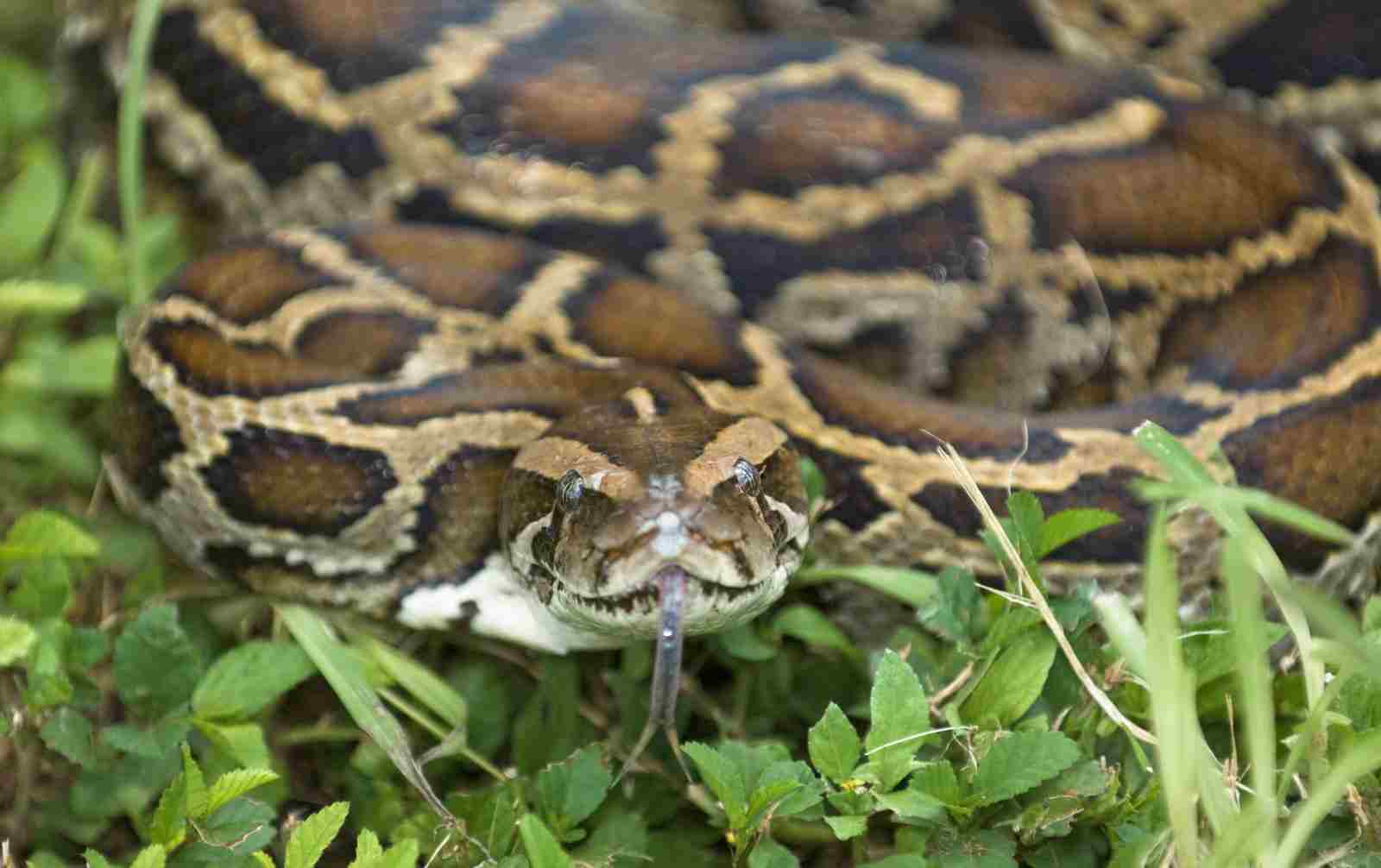
Alligator:
Broad, U-shaped snout
Armor-like scales
Webbed feet for aquatic life
Python:
Slender, elongated body
Smooth, overlapping scales
No limbs; adapted for crawling
Comparison: Alligators have a bulkier appearance with distinctive features for aquatic life, while pythons are slender and adapted for terrestrial movement.
Ecological Implications: The alligator’s appearance aids in efficient swimming and hunting in aquatic environments, while the python’s sleek body supports stealthy movement through varied terrains.
3. Size:
Alligator:
American Alligator: Adult males 9-15 feet, females 6-10 feet
Chinese Alligator: Smaller, typically around 5 feet
Python:
Burmese Python: Can exceed 18 feet, occasionally over 20 feet
African Rock Python: Similar size range
Comparison: Pythons generally attain larger sizes, with some species surpassing the length of alligators.
Ecological Implications: Size influences the species’ role in the ecosystem; larger pythons may have a different ecological impact due to their predatory behavior and potential impact on local fauna.
4. Weight:
Alligator:
American Alligator: Adult males 500-1,000 pounds, females 200-250 pounds
Chinese Alligator: Much lighter, around 45-80 pounds
Python:
Burmese Python: Adult individuals can weigh over 200 pounds
African Rock Python: Similar weight range
Comparison: Alligators, especially the American species, tend to be heavier than pythons.
Ecological Implications: Weight influences the energy requirements, prey selection, and ecological interactions; heavier animals might have different impacts on the environment.
5. Bite Force (PSI):
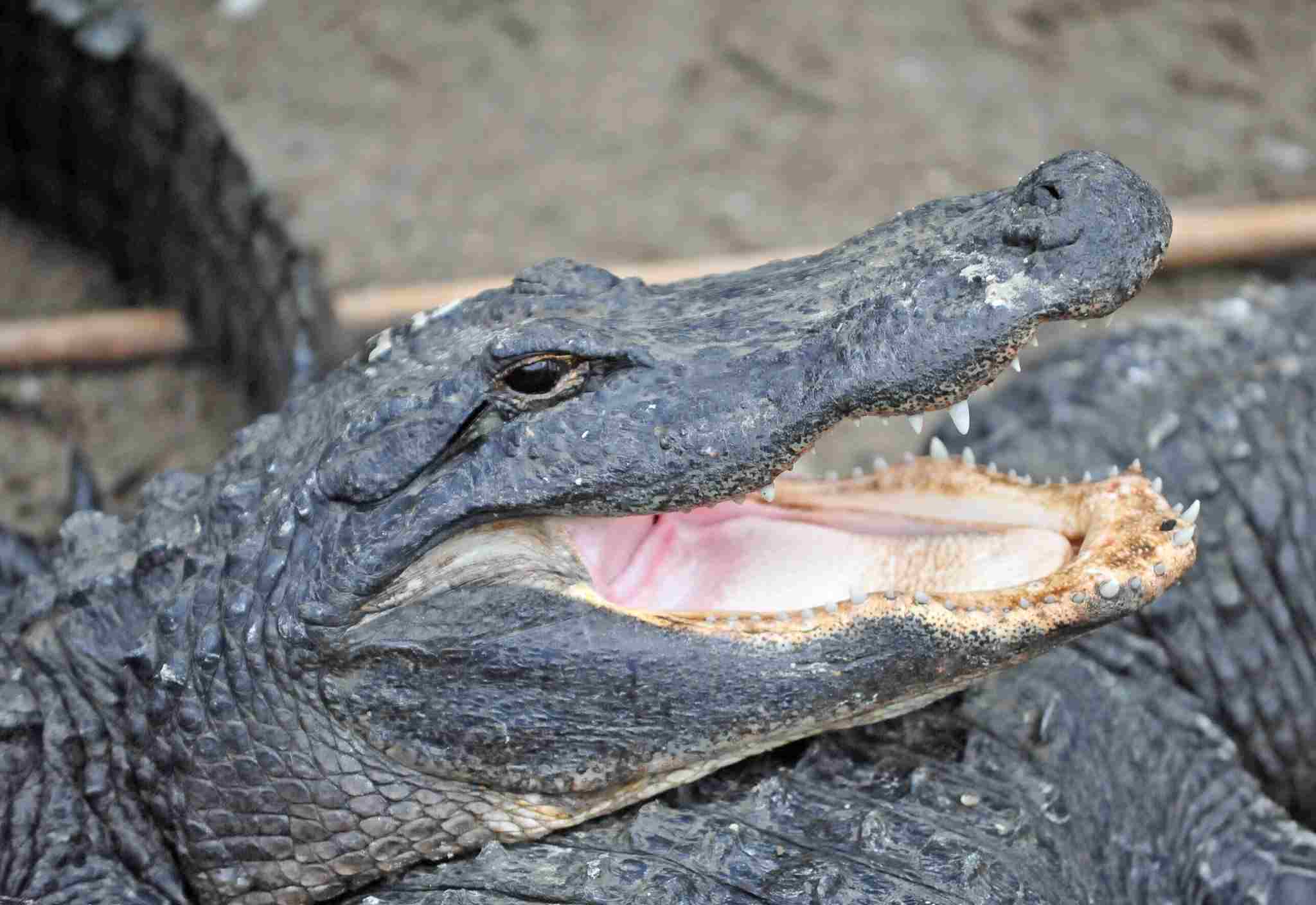
Alligator:
Estimated to have a bite force of about 2,125 PSI
Python:
Bite force varies; not as well-documented as alligators
Comparison: Alligators are known for their powerful bite force, while less information is available regarding python bite force.
Ecological Implications: Bite force is crucial for prey capture and feeding strategies; higher bite force in alligators may impact their prey selection and feeding efficiency compared to pythons.
6. Physical Offensive Advantages:
Alligator:
Powerful jaws and bite force for effective prey capture
Ambush hunting strategy, aided by camouflaged appearance
Python:
Constricting capability; wraps around prey and suffocates it
Quick striking ability
Comparison: Alligators rely on powerful bites, while pythons use constriction as their primary offensive strategy.
Ecological Implications: Different offensive strategies may affect prey populations differently, influencing the balance within their respective ecosystems.
7. Physical Defensive Advantages:
Alligator:
Tough, armor-like scales provide protection
Powerful tail for aquatic propulsion and defense
Python:
Ability to escape quickly through flexibility and agility
Camouflaged coloration aids in hiding from potential threats
Comparison: Alligators have physical armor, while pythons depend on agility and camouflage for defense.
Ecological Implications: Varied defensive mechanisms impact the interactions between these species and their predators, influencing the overall ecosystem dynamics.
8. Speed (Km/hour or Mile/hour):
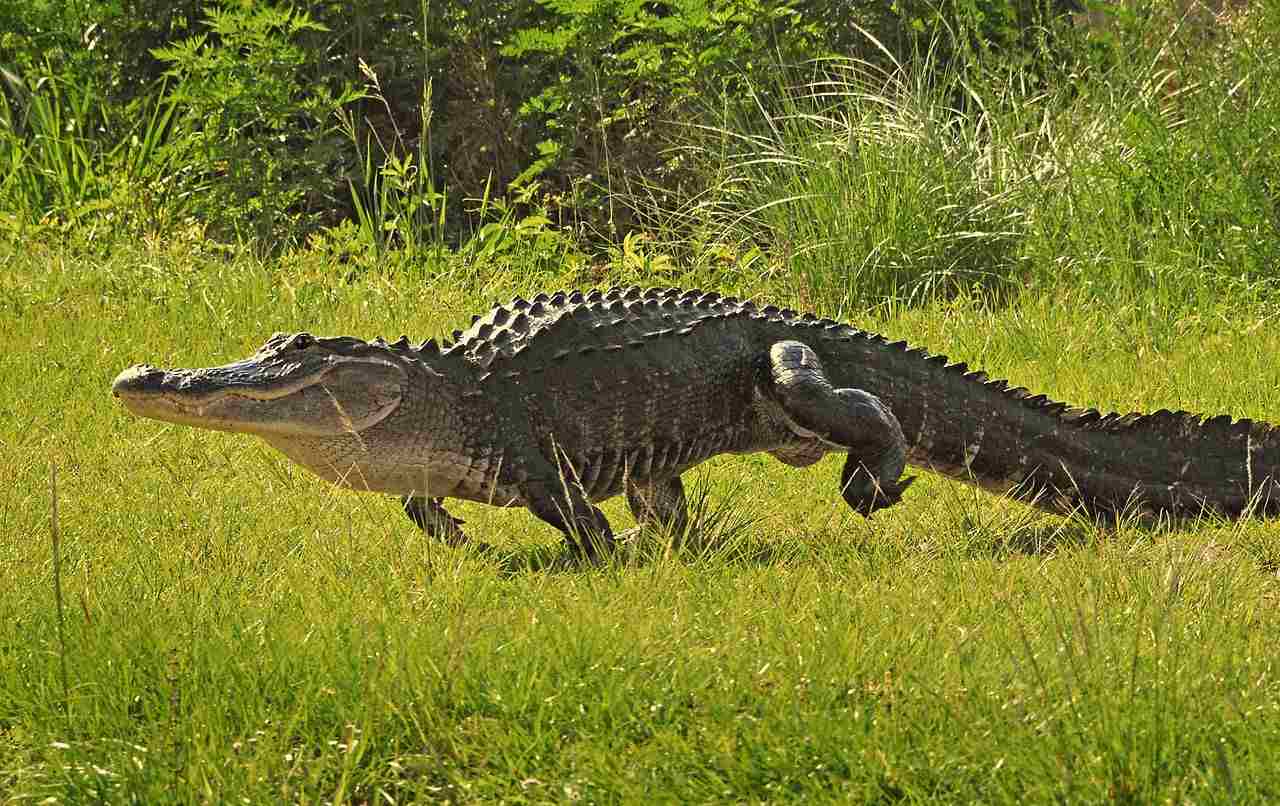
Alligator:
On land: Up to 10 mph (16 km/h)
In water: 20 mph (32 km/h)
Python:
Slower on land due to crawling; exact speed varies
Comparison: Alligators exhibit faster movement, especially in aquatic environments.
Ecological Implications: Speed influences hunting success and escape from predators, contributing to the species’ ecological roles.
9. Agility:
Alligator:
Agile in water, capable of swift turns and maneuvers
Slower and less agile on land
Python:
Highly agile on land, especially in tight spaces
Less agile in water due to lack of limbs
Comparison: Pythons demonstrate greater agility on land, while alligators excel in aquatic environments.
Ecological Implications: Agility affects hunting strategies and adaptation to specific habitats, influencing the ecological niches each species occupies.
10. Overall Physical Capacity:
Alligator:
Well-adapted to aquatic life
Strong swimmers with streamlined bodies
Python:
Terrestrial adaptation with efficient crawling abilities
Comparison: Alligators are specialized for aquatic environments, while pythons are well-adapted to terrestrial habitats.
Ecological Implications: Physical capacities determine the range and effectiveness of these species within their respective ecosystems.
11. Habitat Preference(s):

Alligator:
Swamps, marshes, rivers, and lakes
Require freshwater habitats
Python:
Varied habitats including grasslands, forests, and marshes
More adaptable to different environmental conditions
Comparison: Alligators have a more specific habitat preference, primarily freshwater, while pythons are adaptable across various environments.
Ecological Implications: Habitat preferences influence the distribution and potential impact on other species within the ecosystem.
12. Tracks:
Alligator:
Clawed webbed footprints
Tail drag mark between hind legs
Python:
Serpentine trail with no visible limbs
Belly scales may leave imprints
Comparison: Alligator tracks show distinct clawed footprints, while pythons leave a serpentine trail.
Ecological Implications: Tracking can aid in understanding the presence, behavior, and population dynamics of these species in the wild.
13. Lifespan:
Alligator:
American Alligator: 30-50 years in the wild
Chinese Alligator: 40-60 years
Python:
Varies by species, but commonly 20-25 years in the wild
Comparison: Alligators generally have longer lifespans than pythons.
Ecological Implications: Lifespan influences population dynamics, reproductive strategies, and overall ecological roles in the ecosystem.
14. Mode of Feeding:

Alligator:
Grasping prey with powerful jaws, often swallowing it whole
Opportunistic feeders; diet includes fish, birds, mammals, and reptiles
Python:
Constricts prey before swallowing it whole
Ambush predators; prey on birds, mammals, and occasionally larger animals
Comparison: Alligators use a powerful bite to capture and consume prey, while pythons rely on constriction.
Ecological Implications: Different feeding modes may impact prey populations and community structure within their habitats.
15. Intelligence:
Alligator:
Display problem-solving abilities
Exhibit social learning in some contexts
Python:
Limited cognitive studies; less known about problem-solving abilities
Comparison: Both show signs of intelligence, but more research is needed on python cognitive abilities.
Ecological Implications: Intelligence influences adaptive behaviors and responses to environmental changes, affecting the species’ ecological roles.
16. Social Behavior:
Alligator:
Some social structure; mother guarding nests
Solitary behavior is common in adults
Python:
Solitary except during mating season
Limited social interactions
Comparison: Both species generally exhibit solitary behavior outside of specific social contexts.
Ecological Implications: Social behavior affects population dynamics and resource utilization within ecosystems.
17. Mode of Reproduction:
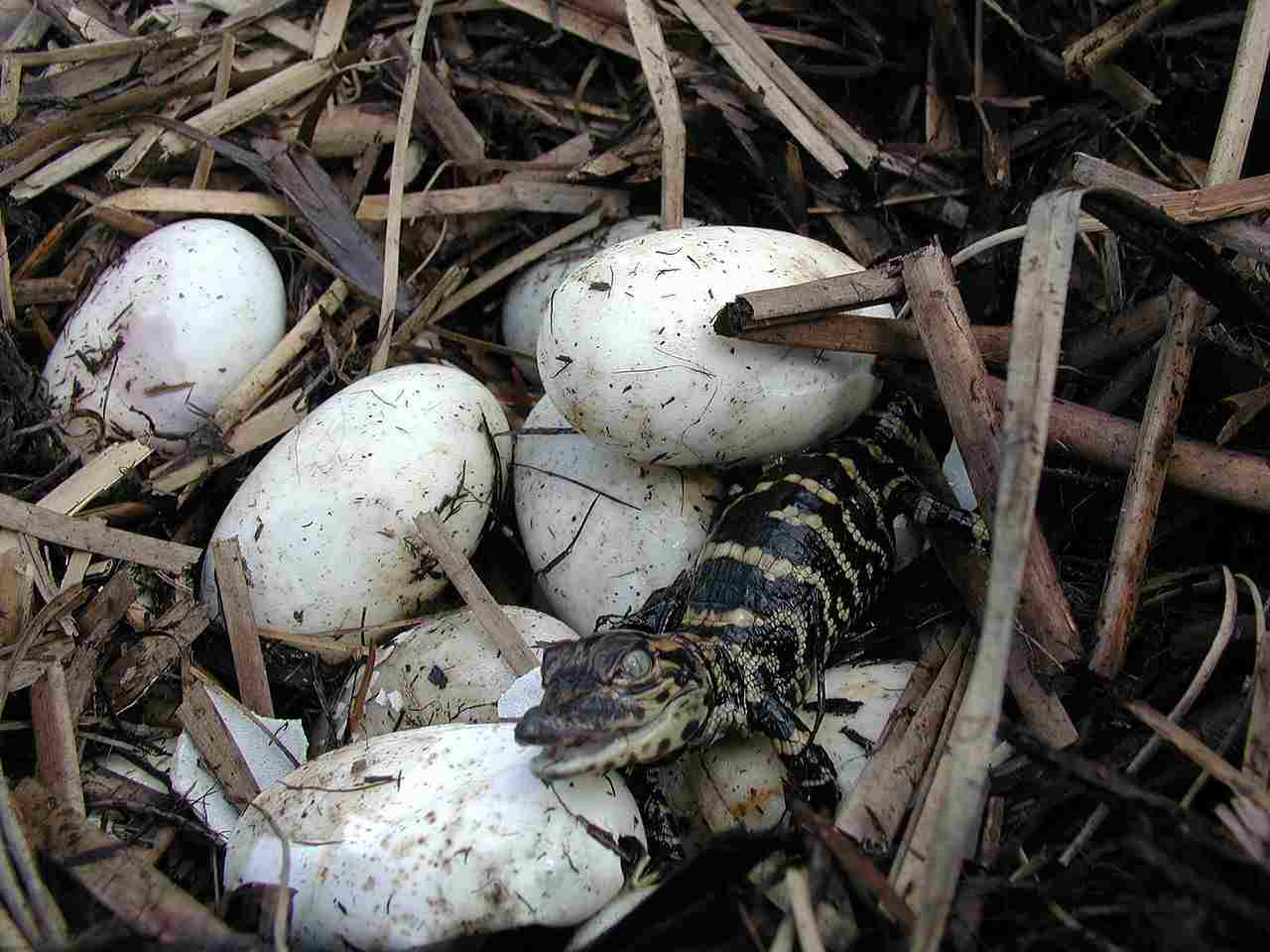
Alligator:
Oviparous; lay eggs in nests
Temperature-dependent sex determination
Python:
Oviparous; lay eggs in concealed locations
Incubation temperature influences sex
Comparison: Both species are oviparous and lay eggs, but the nesting and incubation methods differ.
Ecological Implications: Reproductive strategies impact population dynamics, and the temperature-dependent sex determination can influence sex ratios within populations.
18. Parental Behavior:
Alligator:
Female guards the nest and may help hatchlings to water
Limited parental care beyond early stages
Python:
Female guards the nest until eggs hatch
No parental care beyond hatching
Comparison: Both exhibit maternal protection during the nesting phase, but parental care is limited in both species.
Ecological Implications: Parental behaviors influence the survival rates of offspring and contribute to population dynamics.
19. Proximity to Human-Inhabited Areas:
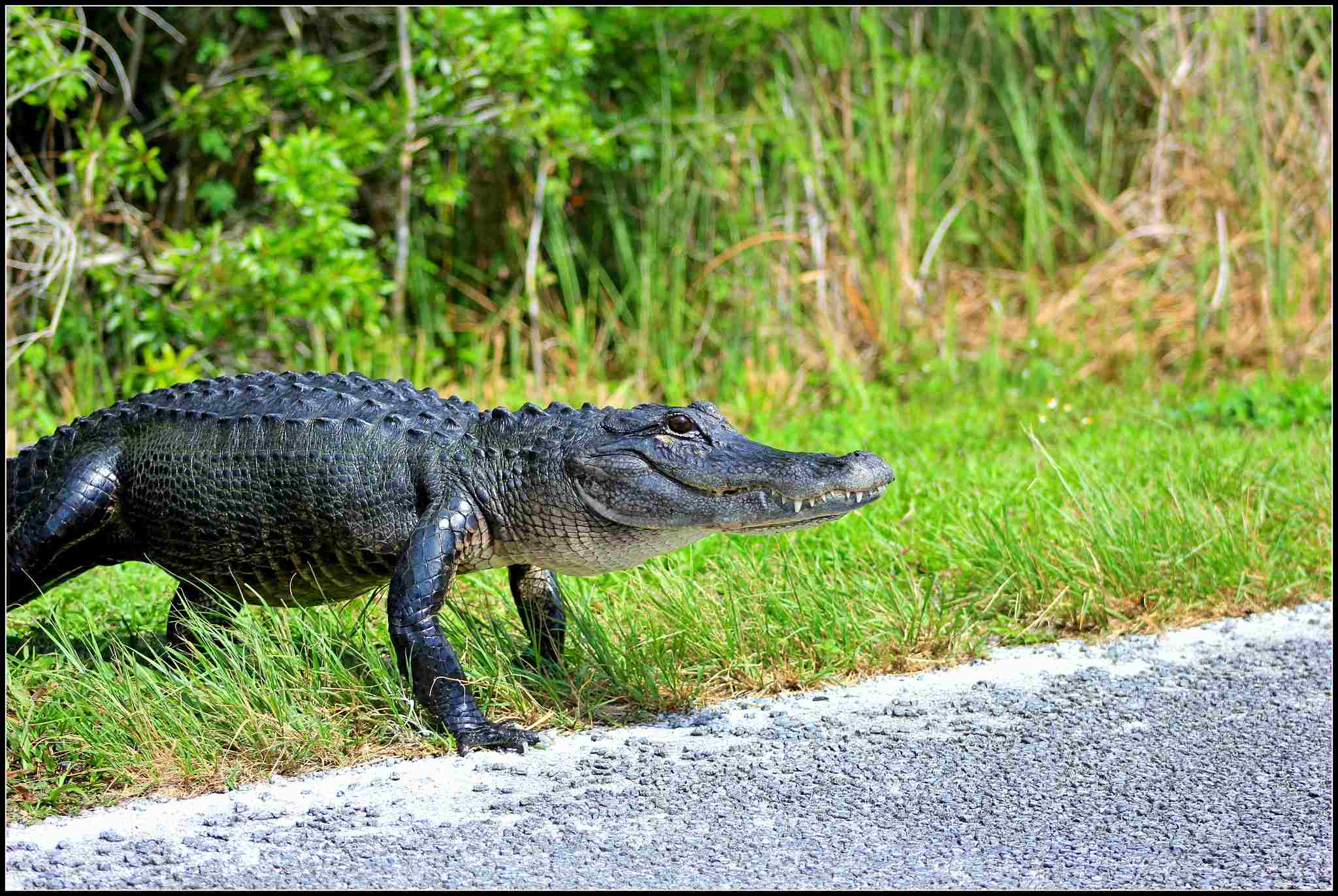
Alligator:
Found in water bodies close to human settlements
Occasionally venture into urban areas
Python:
Can be found near human habitats, especially in tropical regions
May enter residential areas in search of food
Comparison: Both species may come into proximity with human-inhabited areas, potentially leading to human-wildlife conflicts.
Ecological Implications: Human interaction can impact the behavior and survival of these species, with potential implications for local ecosystems.
20. Behavior Toward Humans:
Alligator:
Generally wary of humans; attacks are rare
May become aggressive if provoked or during mating season
Python:
Generally shy and avoids humans
Attacks on humans are infrequent but may occur if threatened
Comparison: Both species tend to avoid humans but may display aggression if provoked.
Ecological Implications: Human-wildlife interactions can affect the behavior and conservation status of these species.
21. Danger Posed to Humans:
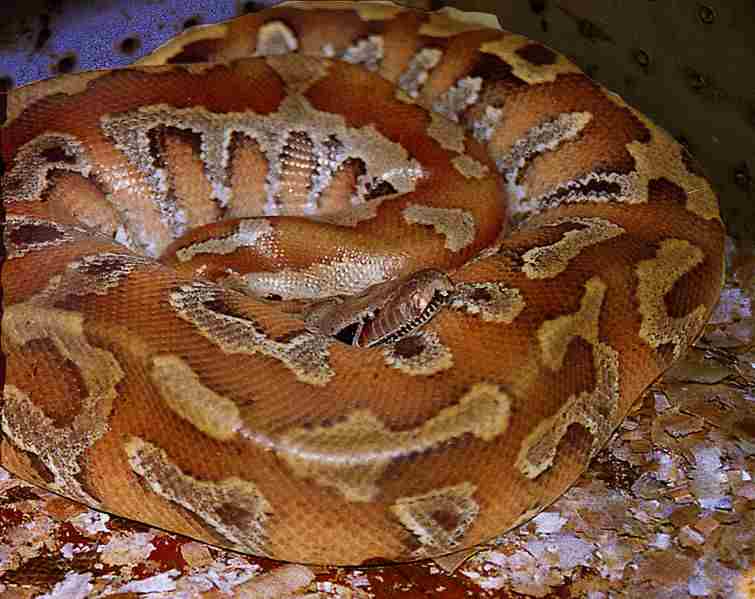
Alligator:
Infrequent attacks; usually defensive or territorial
Can be dangerous, especially in areas with high human activity
Python:
Rare attacks; typically when provoked or cornered
Potential danger, particularly in regions with dense human populations
Comparison: Both species pose a potential danger to humans, with attacks being infrequent but possible.
Ecological Implications: Human safety concerns may lead to management strategies that impact the conservation and behavior of these species.
22. Associated Precautions:
Alligator:
Warning signs near water bodies in known habitats
Encouraging public awareness of alligator behavior
Implementation of regulations regarding feeding or approaching alligators
Python:
Education on snake awareness and safety
Reporting and removal of snakes from residential areas by trained professionals
Comparison: Precautions for both species include public awareness, signage, and removal of individuals posing a threat.
Ecological Implications: Implementing precautions helps mitigate human-wildlife conflicts and ensures the safety of both species and humans.
23. Conservation Status:
Alligator:
American Alligator: Least Concern
Chinese Alligator: Endangered
Python:
Burmese Python: Least Concern (invasive in some regions)
African Rock Python: Concerns due to habitat loss and exploitation
Comparison: Conservation status varies, with the Chinese Alligator and certain python species facing higher threats.
Ecological Implications: Conservation efforts are crucial to maintaining biodiversity and ecosystem stability.
Summary of Comparison
Appearance:
Alligators have a bulkier, aquatic-adapted appearance with armor-like scales.
Pythons are slender, terrestrial snakes with smooth, overlapping scales.
Size and Weight:
Alligators are generally smaller and lighter than pythons.
Pythons can reach larger sizes and weights, exceeding the dimensions of alligators.
Bite Force:
Alligators are known for a powerful bite force of around 2,125 PSI.
Python bite force varies but is generally less documented compared to alligators.
Offensive and Defensive Advantages:
Alligators use powerful bites for offense and have protective armor.
Pythons rely on constriction for offense and utilize agility and camouflage for defense.
Speed and Agility:
Alligators are faster in water, reaching speeds up to 20 mph, while pythons are more agile on land.
Pythons exhibit greater agility in terrestrial environments.
Physical Capacity and Habitat Preference:
Alligators are well-adapted to aquatic life and prefer freshwater habitats.
Pythons are adapted to terrestrial habitats and show adaptability across various environments.
Tracks and Lifespan:
Alligator tracks feature clawed webbed footprints, while pythons leave a serpentine trail.
Alligators generally have longer lifespans compared to pythons.
Feeding and Intelligence:
Alligators grasp and swallow prey with powerful bites and show signs of intelligence.
Pythons constrict prey before swallowing whole, with less documented intelligence.
Social Behavior and Reproduction:
Both species exhibit primarily solitary behavior, with limited social interactions.
Both are oviparous, laying eggs with different nesting and incubation methods.
Parental Behavior and Proximity to Humans:
Limited parental care in both species during the early stages.
Both can come into proximity with human-inhabited areas, potentially leading to conflicts.
Behavior Toward Humans and Danger Posed:
Both generally avoid humans but may become aggressive if provoked.
Both pose a potential danger to humans, with attacks being infrequent but possible.
Associated Precautions and Conservation Status:
Similar precautions for both species include public awareness and removal of individuals posing threats.
Conservation status varies, with the Chinese Alligator and certain python species facing higher threats.
Conclusion:
I. Similarities:
Both are reptiles.
Oviparous with similar reproductive strategies.
Potential danger to humans if provoked.
II. Differences:
Alligators are adapted to aquatic life, while pythons are terrestrial.
Alligators exhibit powerful bites, while pythons use constriction.
Alligator conservation status varies, with the Chinese Alligator facing higher threats compared to some python species.

